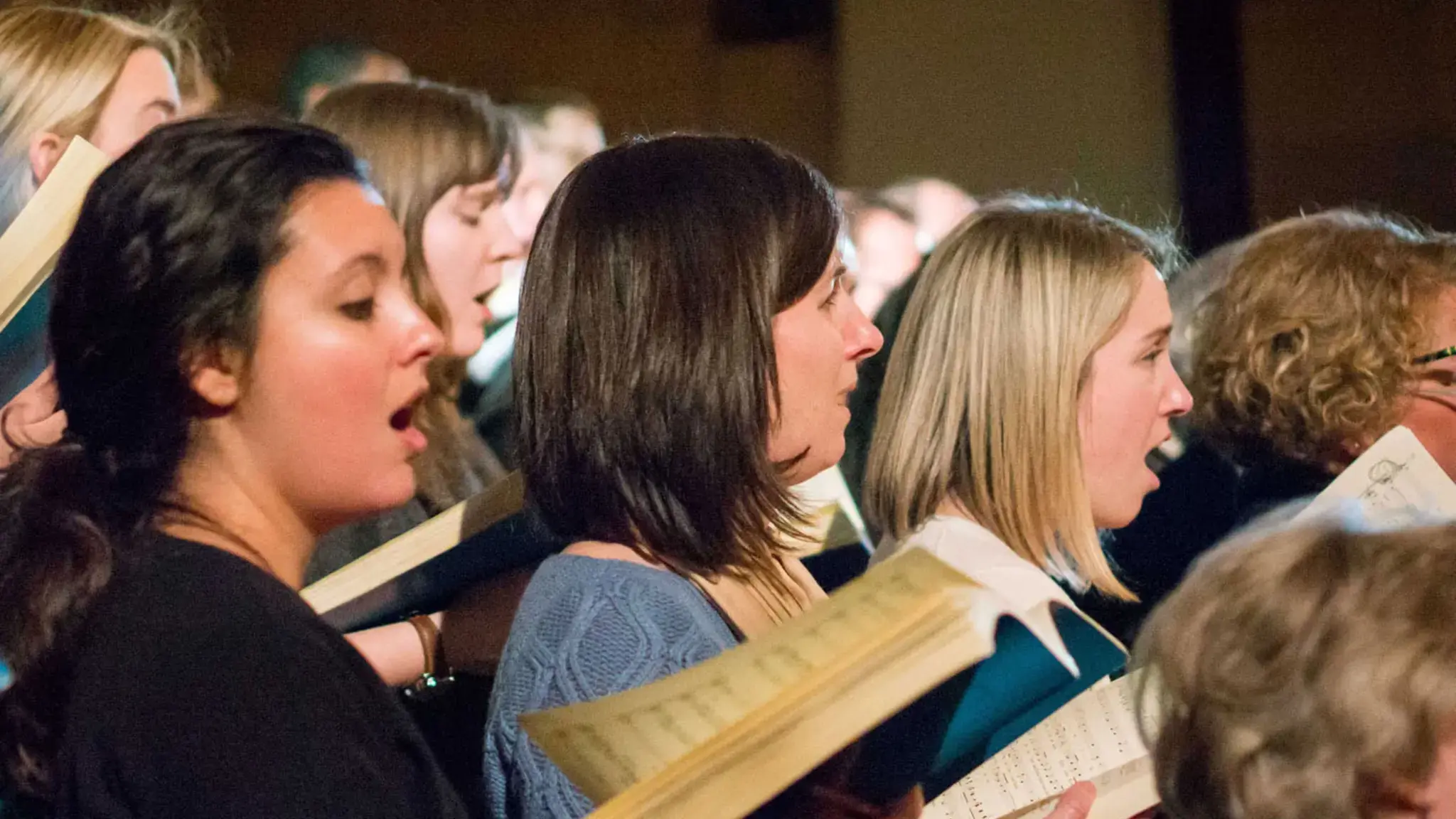

On February 8, 2015, the Mendelssohn Club of Philadelphia presented the Center-funded American premiere of Felix Mendelssohn’s 1841 revision of Johann Sebastian Bach’s St. Matthew Passion at Girard College Chapel. In the booklet accompanying the performance, Dr. R. Larry Todd comments on the significance that the multiple interpretations of the work engender for different generations. “To hear Mendelssohn’s 1841 version of the Passion today is on a deeper level also to revisit or remind ourselves of the last 175 years of the Bach Revival, which has taken so many turns in the Western classical tradition,” Todd writes in the excerpt that follows.
“I suppose the paramount question for me in approaching Mendelssohn’s revival(s) of the St. Matthew Passion is: whose Passion are we hearing? Is the composition the timeless masterpiece of Bach, is it Mendelssohn’s 19th-century vision(s) of reclaiming a lost icon of the Baroque, is it our historically blurred vision of both, or is it all of these readings combined? Like all great musical monuments, part of the significance of the St. Matthew Passion lies in the multiple interpretations it engenders for different generations.
For those who crowded into the Berlin Sing-Akademie in 1829 to hear a 20-year-old prodigy of Jewish descent perform the Passion for the first time in a century, even if in an abridged version, the “restoration” of the Matthew Passion was a signal event that stirred a collective German musical and Lutheran consciousness, and advanced considerably the nascent Bach Revival. For those who crowded into the St. Thomas Church in Leipzig on Palm Sunday 1841 to hear the pre-eminent German composer of the age conduct the work again, this time in a more complete version, the experience marked a second stage in the revival process. In 1829 Mendelssohn had overcome considerable opposition to mount the performance, for many of the relatively few musical “connoisseurs” acquainted with Bach’s music viewed it as unpalatable for mass consumption, and Bach’s art as that of a “dry mathematician” who would never appeal to the popular imagination.
So Mendelssohn had cut several numbers from the score and presented the work in a truncated version. But by 1841, the Bach Revival had advanced considerably. Not only was Bach once again being performed frequently in Leipzig, the city where he had worked for nearly three decades, but Mendelssohn was endeavoring to memorialize the composer in a more fitting way.
Mendelssohn made a point of featuring Bach’s music in historical concerts at the Gewandhaus, he gave a grand concert of Bach’s organ music in the St. Thomas Church, the proceeds of which, including those from the 1841 St. Matthew performance, were dedicated to funding a sandstone monument to the composer, placed nearby the church, and dedicated in 1843 (it still survives today).
Fast forwarding to 2015: to hear Mendelssohn’s 1841 version of the Passion today is on a deeper level also to revisit or remind ourselves of the last 175 years of the Bach Revival, which has taken so many turns in the Western classical tradition—the launching of the Bach Gesellschaft and complete editions of the composer’s music, the neo-Baroque movements of the later 19th and 20th centuries, the revival of the harpsichord (Wanda Landowska playing Bach “his way”), Glenn Gould’s recording of the Goldberg Variations in the 1960s, “Switched-on” Bach, the Swingle Singers, and all the rest.
Bach is now very much a given in the sweep of music history, but it was by no means always so. Mendelssohn played a pivotal role in stimulating our awareness and changing perceptions of the Thomascantor, and hearing his version of the Passion reminds us of this facet of his genius, as a musicological sleuth, even as it allows us too to reexplore the most familiar, epic work of German musical Lutheranism.”
The St. Matthew Passion booklet is available directly from the Mendelssohn Club of Philadelphia.
View a series of videos related to The Bach-Mendelssohn Project on the Mendelssohn Club’s YouTube. >